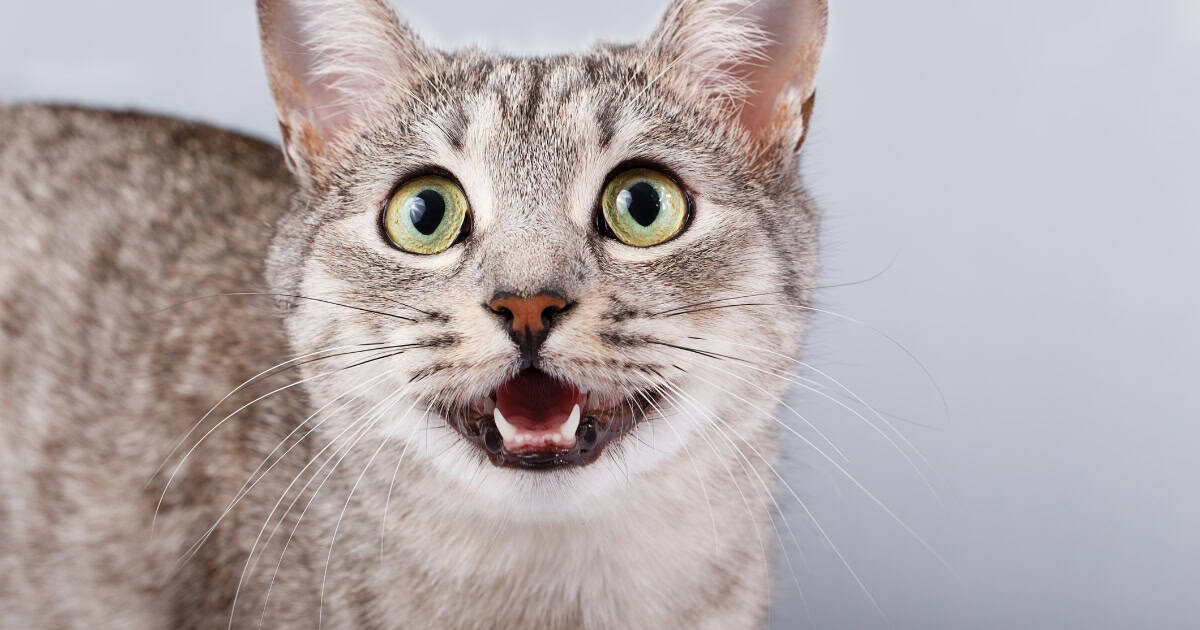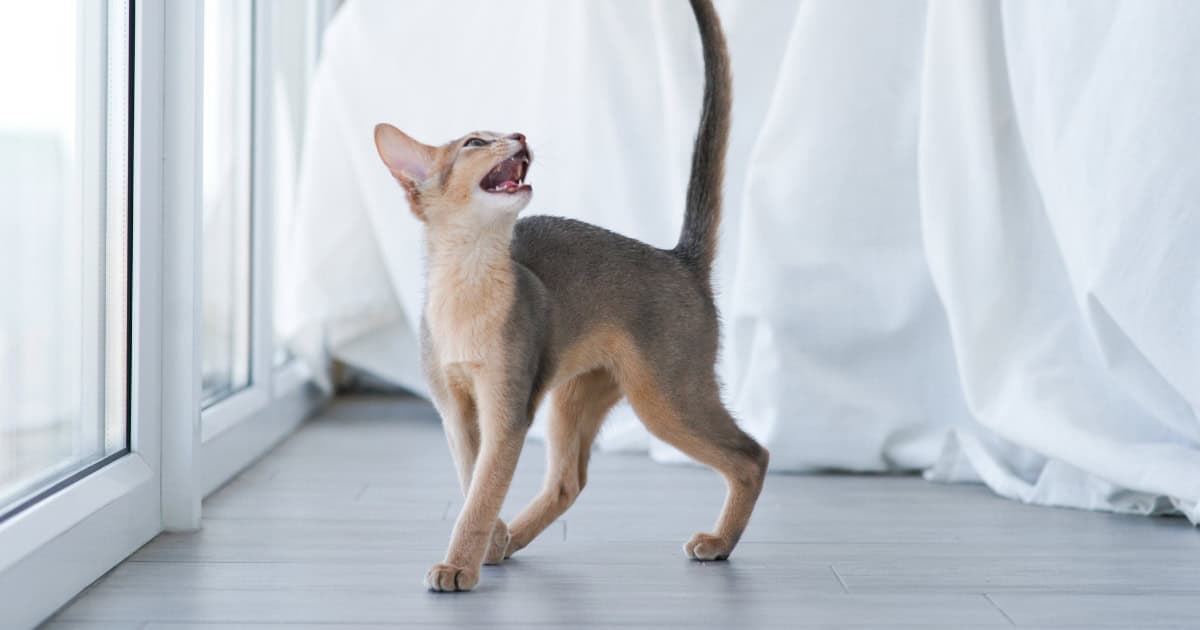Cats, Info Guides
Understanding Cat Meowing Language: An Aussie’s Guide
Cat meowing language varies widely among individual cats, as any cat owner will attest; some cats are chatty, while others prefer quieter interactions.
These delightful ‘meows’ extend beyond mere charming sounds – they form an essential component of how our feline friends convey their feelings and needs.
In order to truly understand what your feline friend is trying to convey through their cat meowing language can be quite challenging yet intriguing at times. From hunger cries to attention-seeking meows or even that demanding yowl at three in the morning.
So let’s delve into the world of ‘cat chat’ and decipher just what your meowing cat is trying to communicate!
Understanding Cat Meowing Language: An Aussie Guide
Cats are known for their meows – it’s their primary method of communicating with us humans.
Cats have a variety of meows in their vocal repertoire that they reserve especially for human interaction.
The tone, volume and frequency can change depending on what they’re trying to convey – just as we modulate our voice when expressing different emotions or needs.
A gentle purr might mean your cat is content while an intense yowl could be a sign of a perceived threat.

Common Reasons Cats Meow
Cats communicate through various means, and one of the most recognisable ways is through cat vocalisations. Cat sounds encompass a wide range of sounds, each carrying its own message.
One of the common reasons cats meow is to express their needs or desires. They might be requesting food, seeking attention, or simply greeting you.
However, it’s important to note that excessive or unusual meowing can also be an indicator of underlying health issues or discomfort.
Monitoring changes in your cat’s meowing patterns and being attuned to their behaviour can provide insights into their well-being and allow you to address any potential concerns promptly.
Learning Your Cat’s Language
Learning your cat’s language involves recognising the different types of meows, purrs, chirps, and yowls and understanding what they’re feeling.
By paying attention to their context and interactions, you can decipher the nuances of cat language.
For instance, when a cat feels content, they may purr softly, while an insistent meow might indicate a specific request.
This understanding allows you to respond more effectively to their needs, ensuring their well-being and fostering a deeper connection.

10 Common Meows and Their Meanings
Cat meows can vary in tone, pitch, duration, and frequency, and they are used by cats to communicate various messages. While individual cats have their unique meowing styles, here are some common interpretations of different cat meows:
1. Normal Meow: A short, friendly meow usually means your cat is trying to get your attention or saying hello.
2. Prolonged Meow: A longer meow with a questioning tone might indicate that your cat is asking for something, such as food, water, or to be let outside.
3. Multiple Meows: Rapid, consecutive meows can be a sign of excitement or urgency, such as when your cat is hungry and impatient for food.
4. Soft Chirping or Chattering: This can happen when a cat sees birds or other prey animals outside the window. It’s thought to be an instinctual response to hunting.
5. Loud Yowling: Loud, intense meowing might indicate pain, discomfort, or distress. Perform a thorough check over to ensure your cat isn’t injured.
6. Purring: While not exactly a meow, purring is another form of vocal communication. Cats tend to purr when they’re content and relaxed, but they can also purr when they’re in pain or anxious.
7. Hissing or Growling: When your cat growls or hisses, it can mean your cat feels threatened, scared, or defensive. It’s a warning to back off.
8. High-Pitched Meow: A higher pitched meow is usually a sign of excitement or anticipation. You will often find cats do this when they’re about to be fed.
9. Demanding Meow: Cats might use a specific type of meow sound to express their demands, such as wanting more attention, playtime, or treats.
10. Whining Meow: This could indicate frustration or a desire for something that the cat can’t access such as a toy.
Remember that your cat’s body language, facial expressions, and overall behaviour are important cues for understanding their meows.
For example, a cat rubbing against you while meowing is likely seeking attention and affection. Over time, you will start to learn what each of your cats meows actually mean.

Building Strong Bonds Through Communication
Building strong bonds between cats and their owners relies on effective communication.
Much like close friends or partners, cats and their owners can develop a secret language.
This shared understanding enables owners to interpret a cat’s meow or a subtle body language with precision, fostering a unique and unbreakable connection between them and their beloved feline companions.
Toni’s Wrap
Understanding cat meowing language is an adventure in itself. Every purr, yowl, and chirp provides insight into the thoughts of your feline friend.
Recognising common meows can be a game-changer, taking you from confusion to comprehension of what your kitty is trying to convey.
Differentiating between types of meows may initially seem complex, but with patience and keen observation, it becomes second nature over time.
Responding appropriately to these vocalisations can not only address immediate needs but also strengthen the bond you share with your furry companion.
At Somerzby, we are dedicated to enhancing the relationship between pets and their humans through better understanding and improved living conditions for our beloved animals.
Our outdoor pet enclosures provide a safe space while giving owners peace of mind.
Or if you are looking for toys or treats to spoil your cat, our friends at Zach’s Pet Shop have got you covered!




